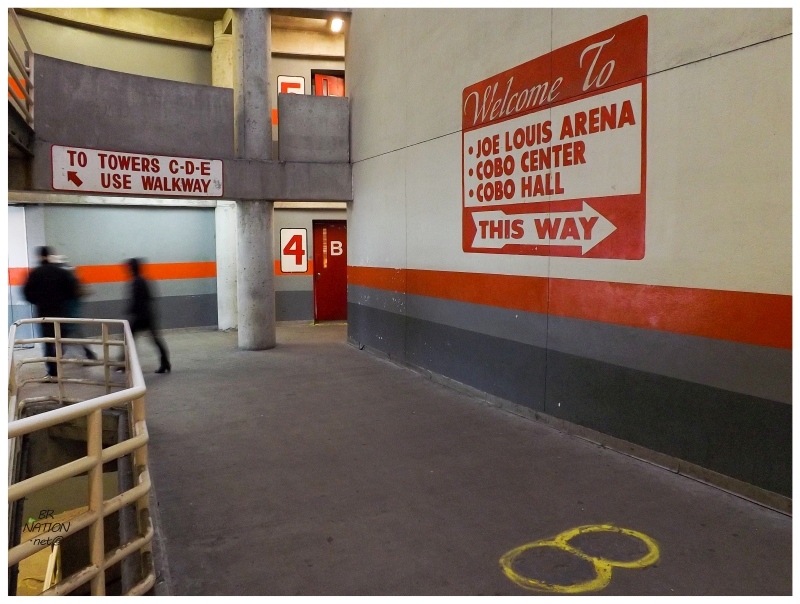Isy and I returned from her week-long birthday trip on a holiday Monday, and while it seemed silly to leave again the upcoming Friday, Isy insisted I should get going. She knew I was going to be crushed if the Atlantic Bubble closed, so even if I could only swing a 48-hour trip, she assured me it would be money well spent. Driving down to Port-aux-Basques, I found a website that calculated the time between days and punched in the day I returned to Newfoundland after my pre-Covid trip to Upstate New York, Hartford & Detroit. Today was 487 days later. For nearly 500 days I'd been sequestered on the Island of Newfoundland. |
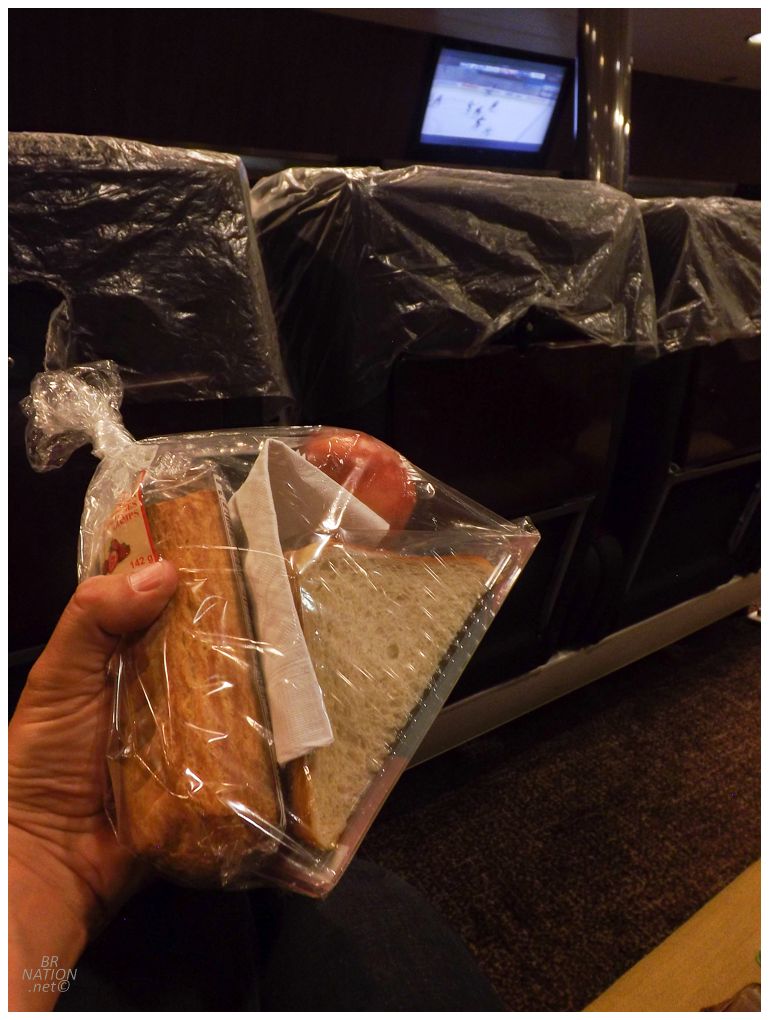
Pandemic snack on the ferry, in lieu of the snack bar being closed.
Pandemic be damned, I still don't have the Bezos money required to get a cabin on the ferry. On the other hand, I think the 'vid meant more people bought cabins and that emptied out the passenger lounge. One person who didn't get a cabin was this goofball who approached an older lady to ask if she minded if he watched a movie on his laptop. The older lady said sure, as why would that bother anyone - except that said goofball then turned on a movie at the same volume as a vacuum cleaner. The woman didn't have it in her to say anything and you could see the disbelief of others all around. Meanwhile I wasn't going to say anything since I found the whole scene so wild and fascinating. It was only amidst gunfire and expletives from this guy's action movie, that a Dad finally went over and firmly told the guy to turn it down, as his kid was uncomfortable with the scary noises blaring over the whole passenger lounge. |

The next day there was a Euro Cup soccer match I wanted to watch, so I didn't proceed past the bigger town of Truro when I needed some lunch. Popping into the Nook & Cranny bistro, the game between the Czechs and Danes was on, but hilariously the plastic Covid shield around my seat reflected outside light and made it close to impossible to see anything on the television set. At least my shakshuka (North African eggs, tomato sauce, spices) was pretty good. |

I was headed into the Annapolis Valley for the afternoon and evening, as that was the location of a big abandoned building I wanted to check out. Not feeling up for exploring, I instead continued to the Town of Kentville, where I knew of a new skatepark that looked pretty damn good. And let me tell you, I had buckets of fun riding this long, low, square rail. |

Doing some of my best riding in ages thanks to this great park and the fantastic weather, one scooter kid was so impressed that he asked if I could jump a certain gap again - and then after I said yes, he yelled at his Mom to watch me jump it. Which, yeah, was pretty funny because she was clearly younger than I am. So I jumped the gap and we shared one of those laughs adults do when they're thrown together by kids not knowing the concept of awkwardness. |

Kentville would be the furthest I'd make it down into the Annapolis Valley before I would have to head back in the direction of the ferry. In the Nova Scotian town of Windsor, there was the building I'd heard might go away: the old Windsor Wear Textile Mill. This one held extra importance to me since it's such a landmark as you drive northeast after leaving Halifax, finding only forests and sparse buildings before Windsor and this giant mill finally makes an appearance. I still vividly remember staring wide-eyed at this building back in 2007, as I raced to make it to school in the valley after spending the night in Truro. |
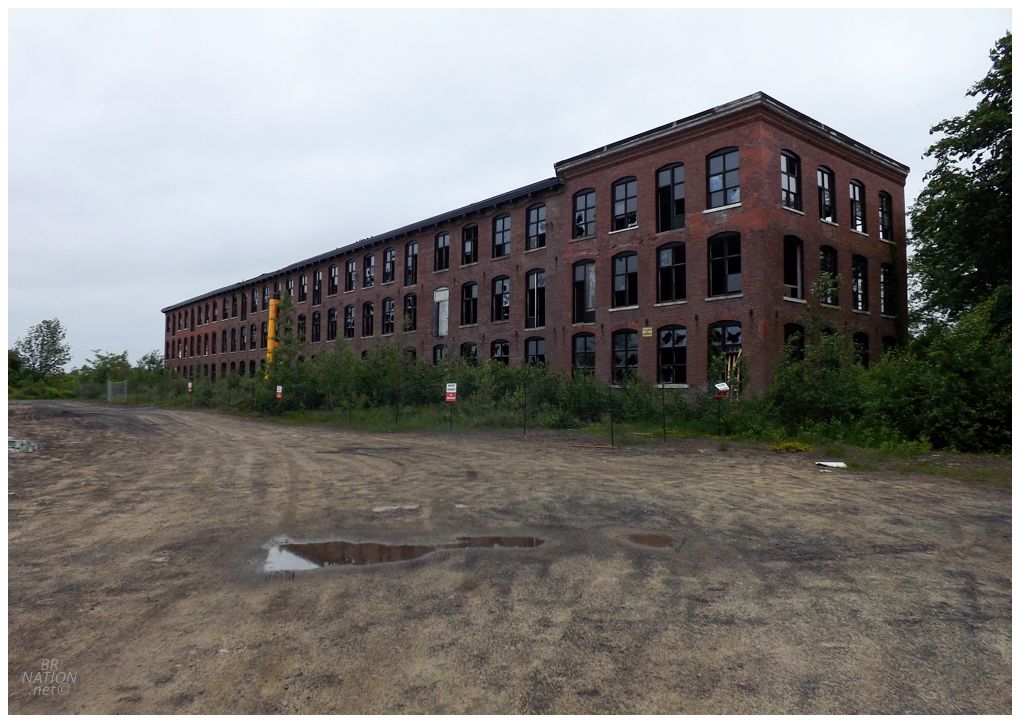
Coming to Nova Scotia back then and being used to going into anything that looked abandoned in Detroit, obviously the Windsor Wear Textile Mill was on my radar. Except that soon after I arrived for the school year, I heard reports of people being charged with trespassing and mixed messages whether this building was actually abandoned, or being renovated, or watched by a caretaker. There was one day I drove over on this side of the NS-101 highway to actually check what was happening on the ground, but activity and cars beside the mill kept me away. Instead I went and explored Horton High School in Greenwich, NS. |
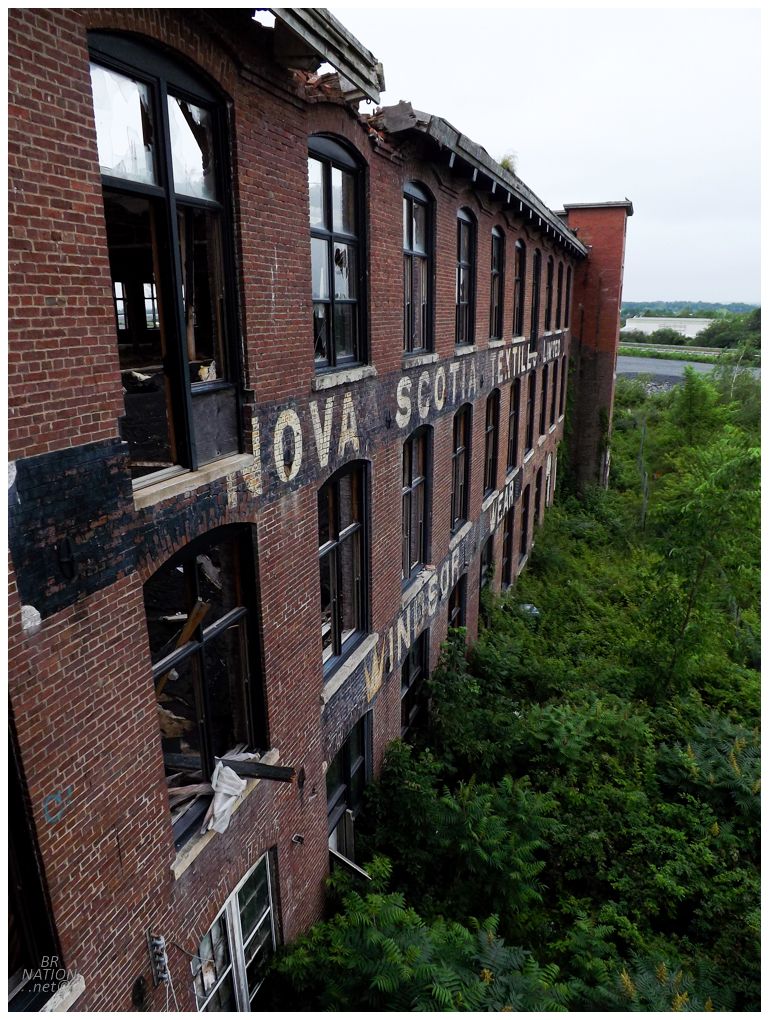
With demolition on the table, and also the number of goobers who were making their way inside, I needed to make this mill the focus of my 24 hours in Nova Scotia. For how many times we partied in Halifax, or I drove to Halifax for Slovenia-Slovakia hockey games, or how many times I passed here en route to PEI or Cape Breton, it was surreal to finally stand here at a missing window overlooking the side of this building I'd always sized up. |
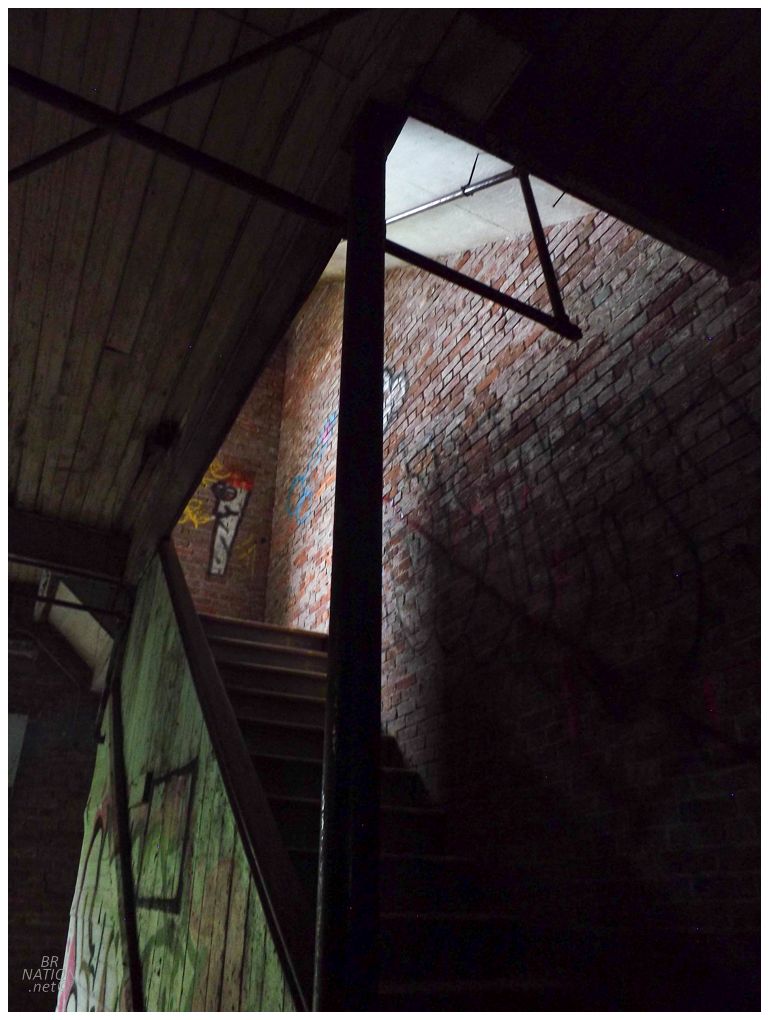
The landscape around modern-day Windsor Nova Scotia was much different in the 16th century. Back then there were a number of islands and the tides affected whether these islands would be occasionally or typically underwater. When the Acadians came in the 1680s, they built ditches and dykes with arbiteauxs that channeled and managed this water, protecting and exposing fertile farmland. |

The English arrived in 1749 and started building small forts intended to assert their perceived stance above the First Nations people and the Acadians. The largest of these forts - and the one still standing - is Fort Edward, built on the most stable and tallest island at the confluence of the Avon & St. Croix Rivers. The First Nations people suffered from starvation, introduced disease, and land theft ever since white man had arrived. With their numbers reduced, the English then rounded up the Acadians and kept them on boats until they could be expulsed to French territories or America. The Acadians who initially evaded capture were held in Fort Edward and then sent off to working sentences in Digby, Cape Breton or the village of Falmouth. The English would replace the Mi'kmaq name of Pisiquid - meaning junction of rivers - with the name Windsor. |
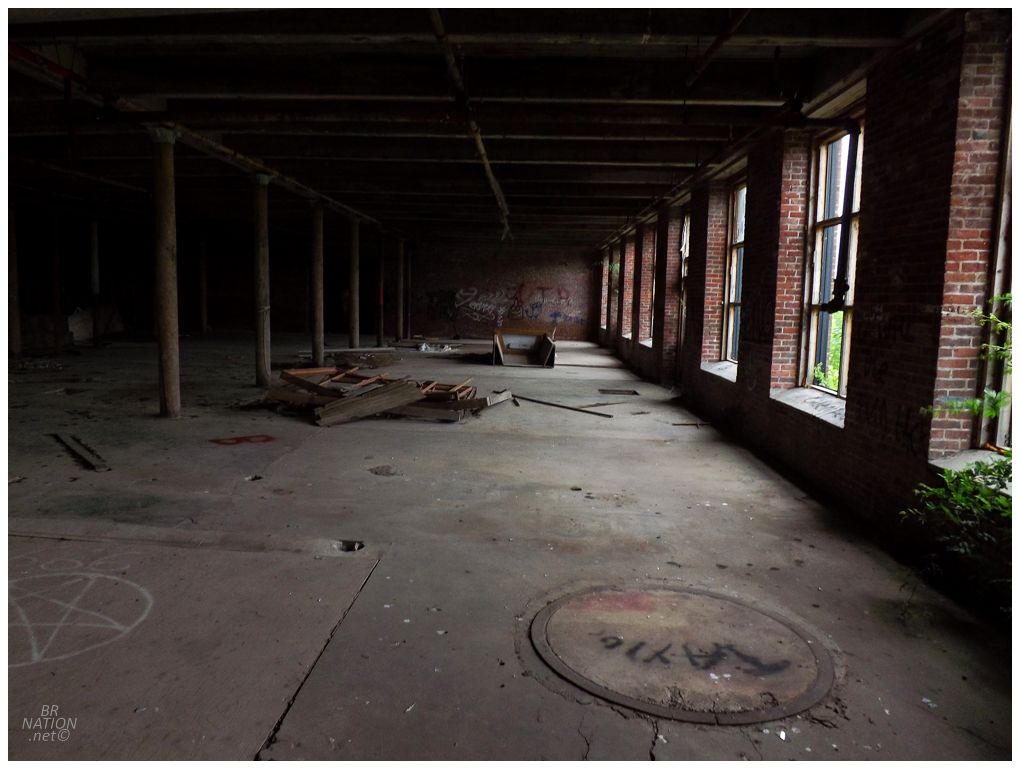
One of the earliest English landowners was a William Nesbitt, who was granted an island just north of Fort Edward. This island was a slab of land surrounded by levies, connected to the rest of Windsor by a single road by the name of Nesbitt Road. The railway was built between Fort Edward and Nesbitt Island, leading Nesbitt Island to have an "other side of the tracks" reputation. This was helped along by Nesbitt Island soon becoming home to two shipyards, a tannery, fertilizer plant, and a cotton factory. This cotton factory was the Windsor Cotton Mill, formed in 1881, and constructed by 1884. The company bought three lots in total on Nesbitt Island, constructing this mill and also workers' homes in the surrounding area. One fun fact is that during the delay in getting machinery over from England and into the empty cotton mill, this place was used for bicycle practice through its vacant floors. So even in 1884, Atlantic Canadian residents were looking for ways to escape winter and continue riding their bikes!! :D |

Construction plans included a tall smokestack, but leaving with the job halfway done one Friday, the bricklayers came back to find the marshland underneath had caused the stack to develop a lean. The decision was made to install a plumb line to monitor the lean, and even though the lean never increased, they still capped the smokestack at half of its planned height. The leaning smokestack would become a landmark - much like the building itself - for decades, until it was torn down in the 1980s. |
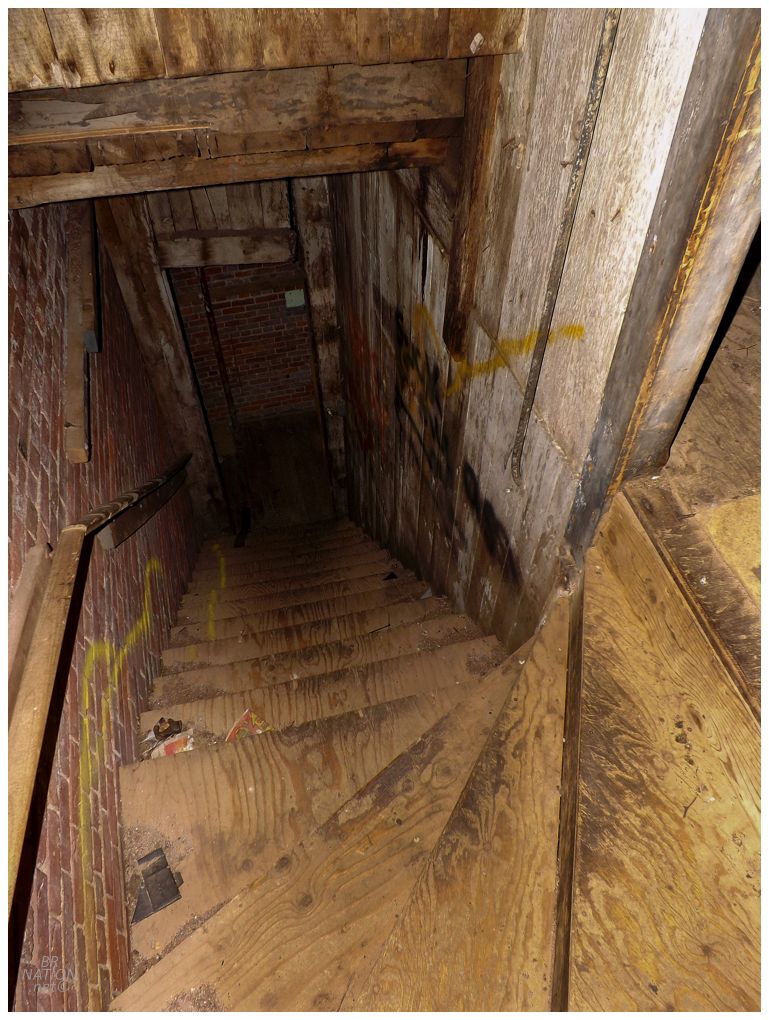
The Dominion Cotton Company purchased the building in 1891, but consolidation of the cotton industry in Quebec & Ontario led to shuttering the Windsor Mill in 1908. Meanwhile, Pictou County's Eureka Woolen Manufacturers was formed in 1893, but suffered a mill fire in 1915. The village of Eureka is but a blip today because of this loss of industry. Windsor saw an opportunity though, and providing tax breaks and a $5000 yearly bonus, the town successfully lured Eureka Woolen Manufacturers into their vacant mill. Many women who were working in the mill in Eureka, relocated to Windsor to work in the new building. A boarding house called the Eureka Hall was constructed by the company on Nesbitt Island to house the newcomers. |
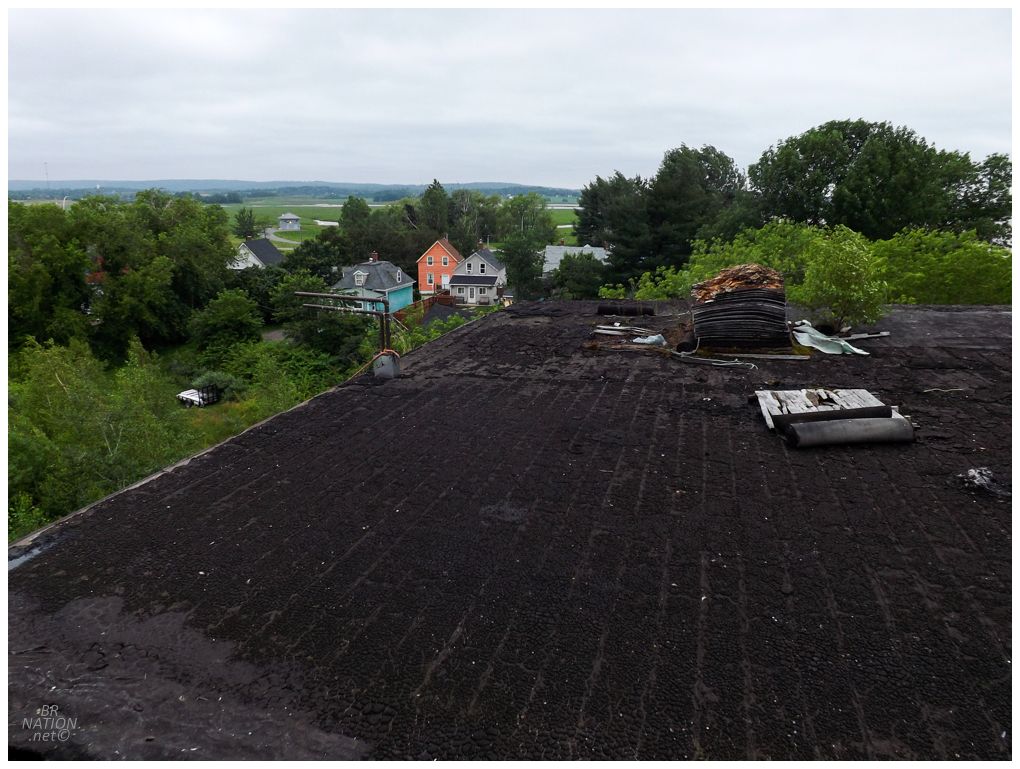
Nesbitt Island lost its shipyards when wooden ships fell out of favour. The tannery would close in the 1900s and the fertilizer plant closed in the 1950s. It's only the cotton mill that continued on into the 1990s and 2000s. The old cotton mill would be dealt a blow by free trade and foreign competition though, as Roots Canada terminated their contract with Nova Scotia Textiles here in 1990. (Throughout my time in Nova Scotia I had a Roots backpack and it was a piece of junk. I have to imagine it would have been better made if it came from Windsor.) The Nova Scotia Textiles mill persevered into the 2000s, surviving on a contract with a Dayton Ohio company that built protective gear for firefighters. The Windsor mill was responsible for the firefighting jackets, and that meant it needed a fireproof material called Nomex, manufactured by the DuPont company. Interestingly enough, the Iraq War would spell the end of the Windsor mill in 2005. Nomex is a cousin of Kevlar, and with the increased need for bulletproof vests by the U.S. Military, DuPont sent a letter out stating that due to the demands for Kevlar, all Nomex deliveries were cancelled until further notice. |

Artist rendering of "Mill Island", 2009. (Viewpoint Realty)
By 2009, a realty company owned the mill and advertised condos between $200,000 and $585,000. New windows, built with the same old esthetic though, were installed around this time. Nothing ever came of this offering, exhibited by how there's no drywall or housing units standing inside the old mill. Sadly, the windows that were so meticulously picked and purchased at a greater cost, were soon after smashed while many of them still had their stickers affixed. |

Just two months after my visit, over half of this mill would come down via demolition. The current owner and developer stated that he recognized the building "carries a lot of “sentimental value” and “good times” for the community", but still demolished the portion from 1884, while keeping the 1945 addition. While I support almost all historic preservation, it strikes me as odd to preserve the newer portion. The developer reasoned that the 1945 portion was in much better shape and closer to being up to code, which, yeah, obviously. The plan is to renovate the 1945 addition into commercial space, while building a 19-story residential highrise, plus a hockey puck-shaped restaurant surrounded by artificial ice as Windsor Nova Scotia claims to be the birthplace of hockey. It'll be quite the landmark if they ever manage to build it. Returning to my car, I briefly entertained the idea of stopping at a pub in Windsor for dinner, but I was here to ride skateparks and check shit out, not sit in some pub for hours. This was an even easier decision because there wasn't a sentimental pub in Windsor from my time in N.S., like say if I was in Annapolis Royal, Bridgetown, or Digby. I headed off into the evening. |
